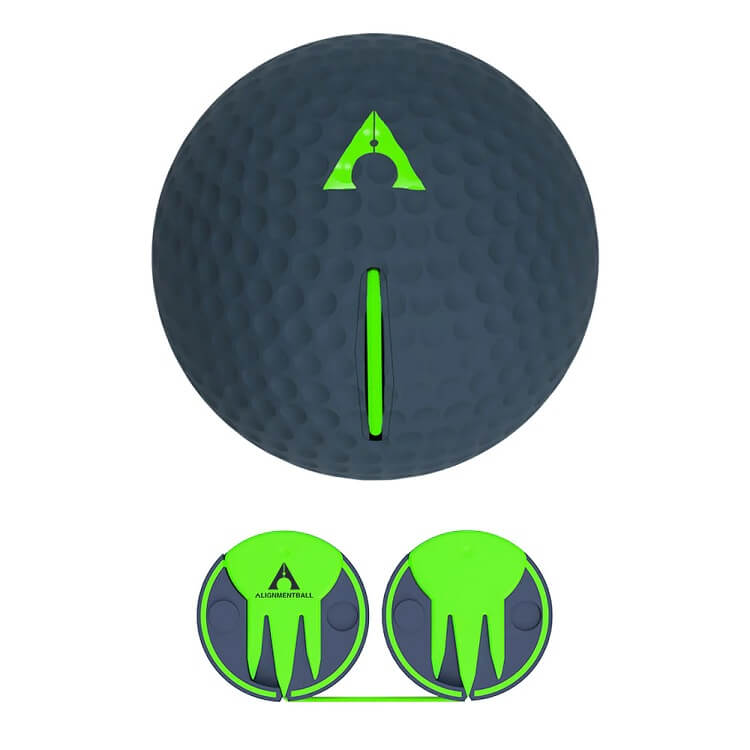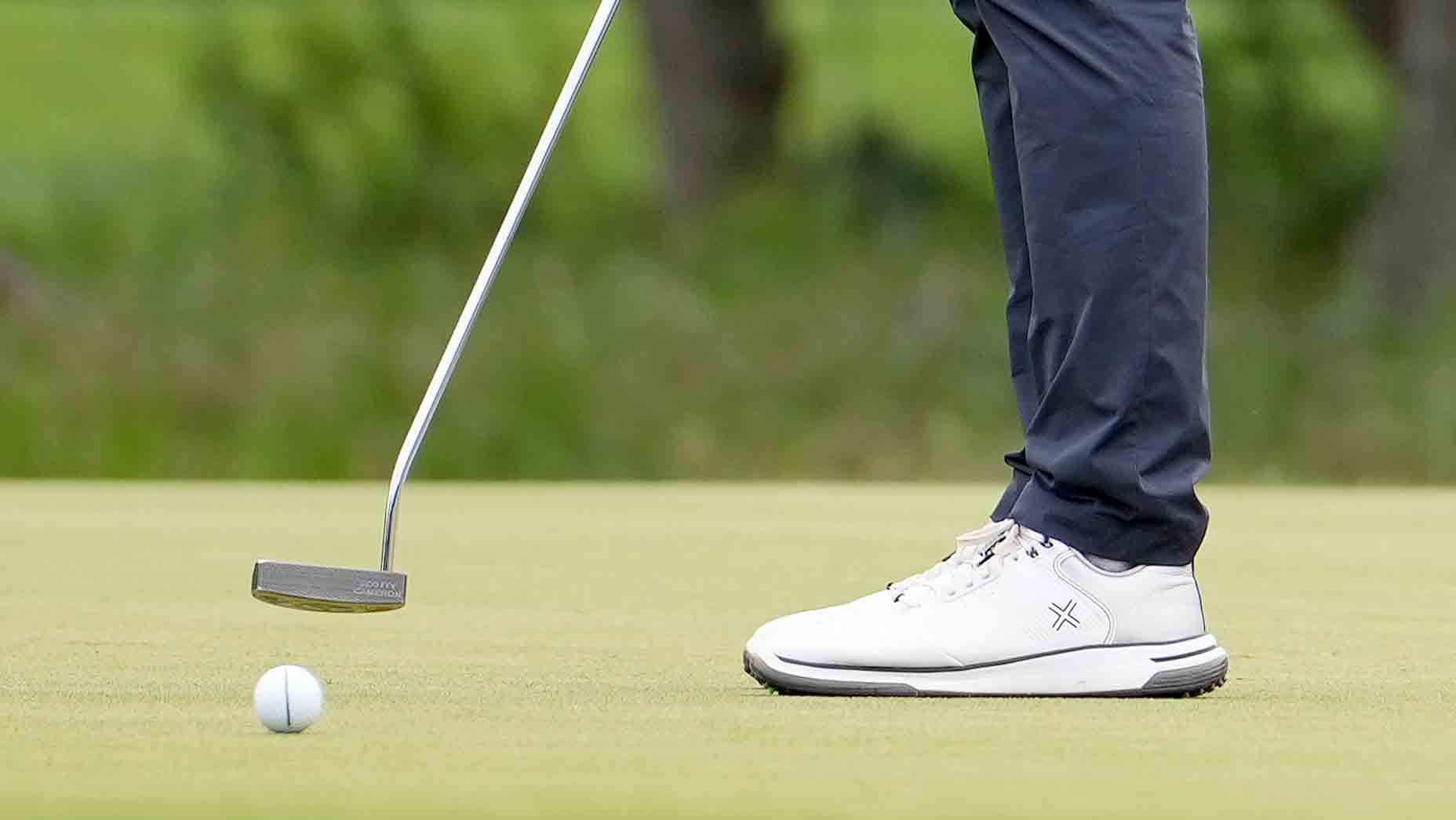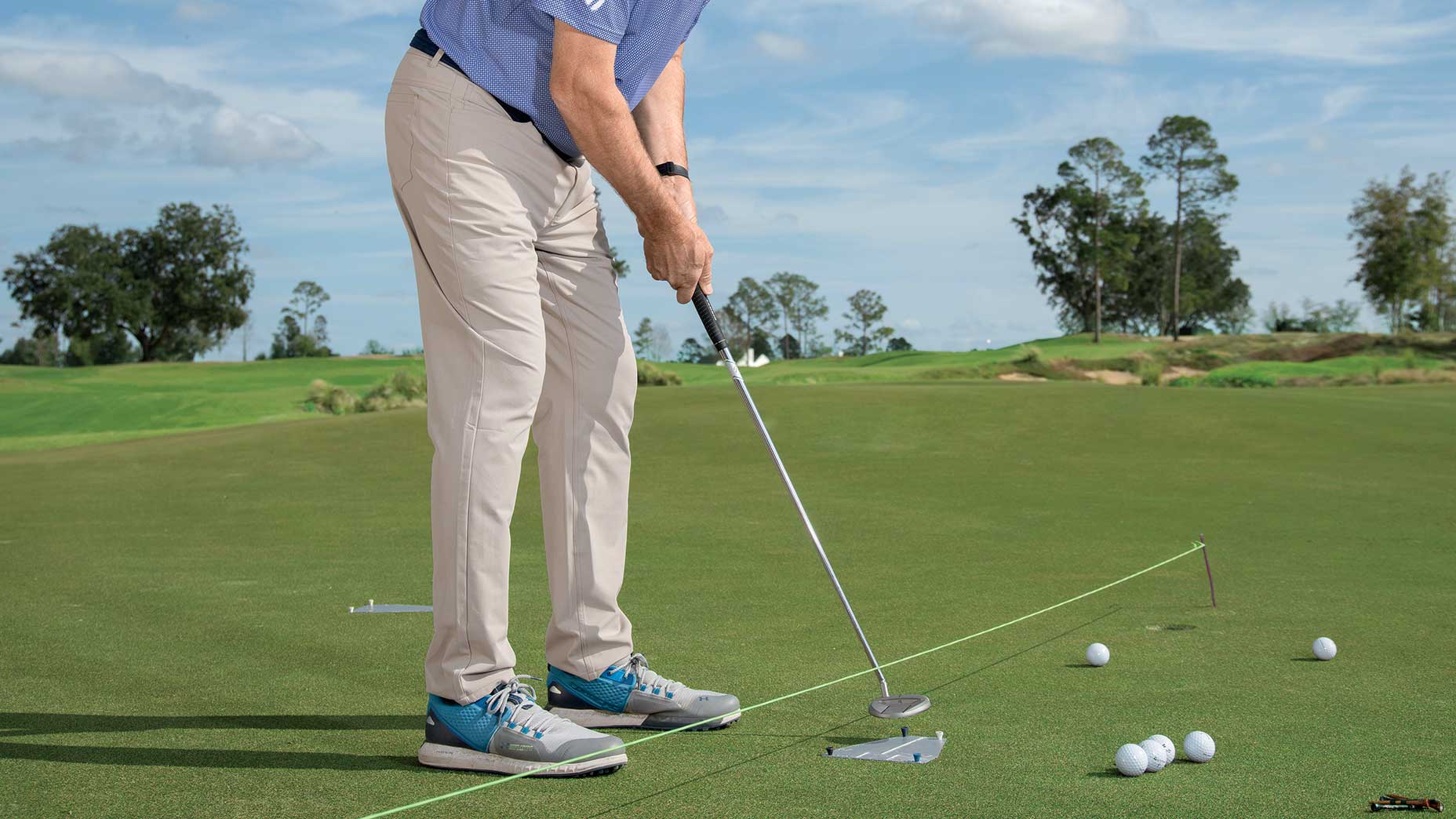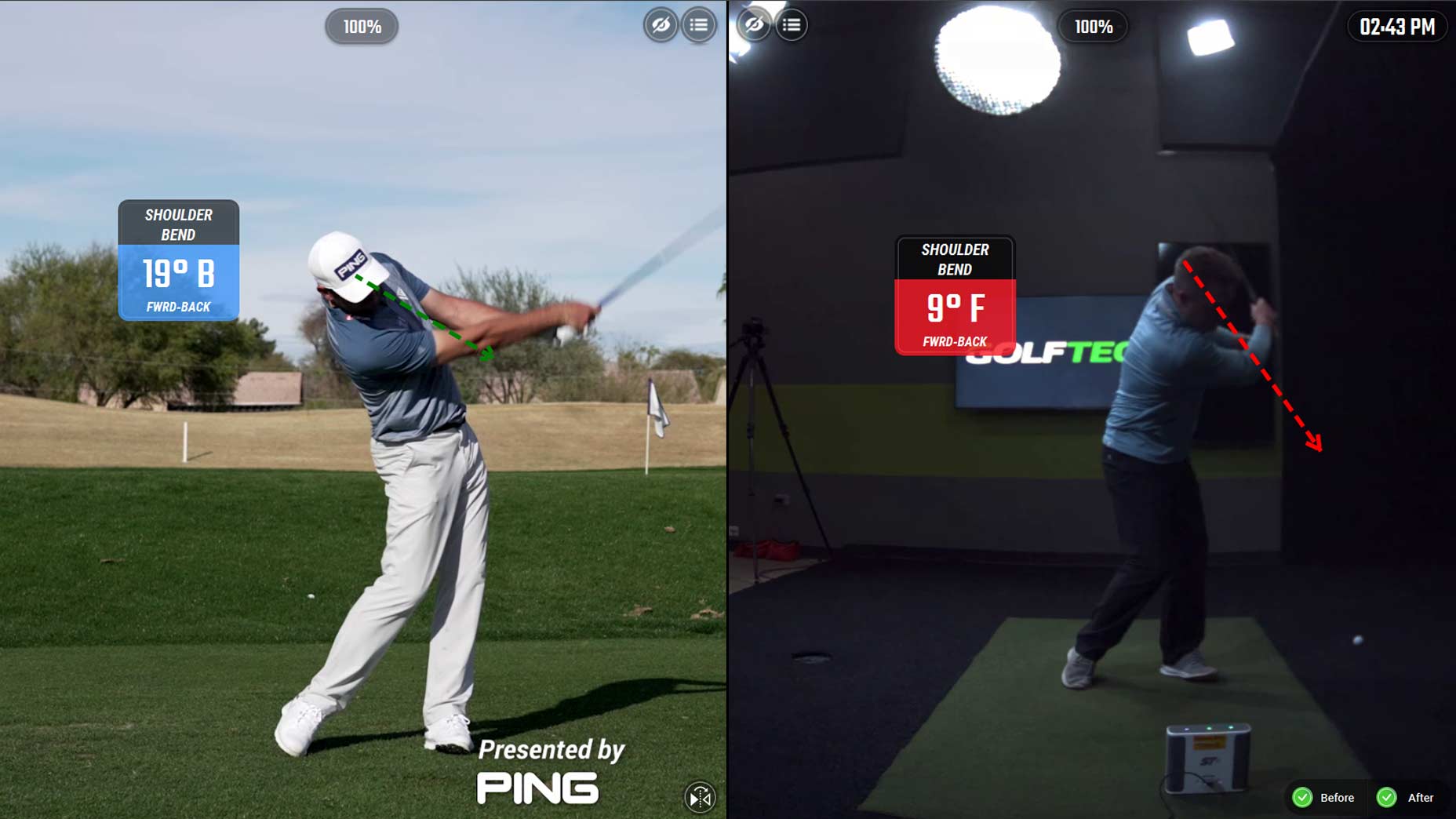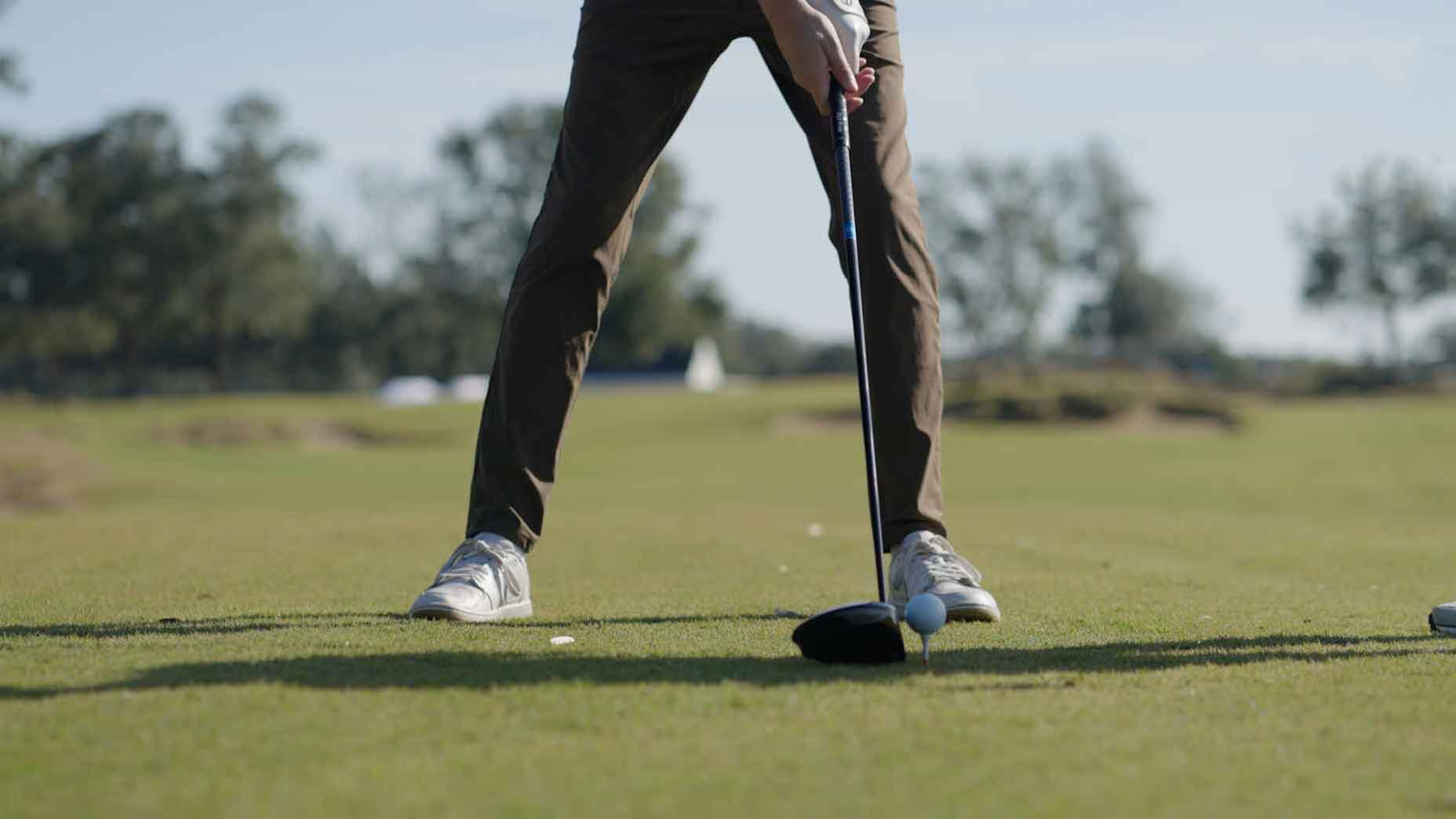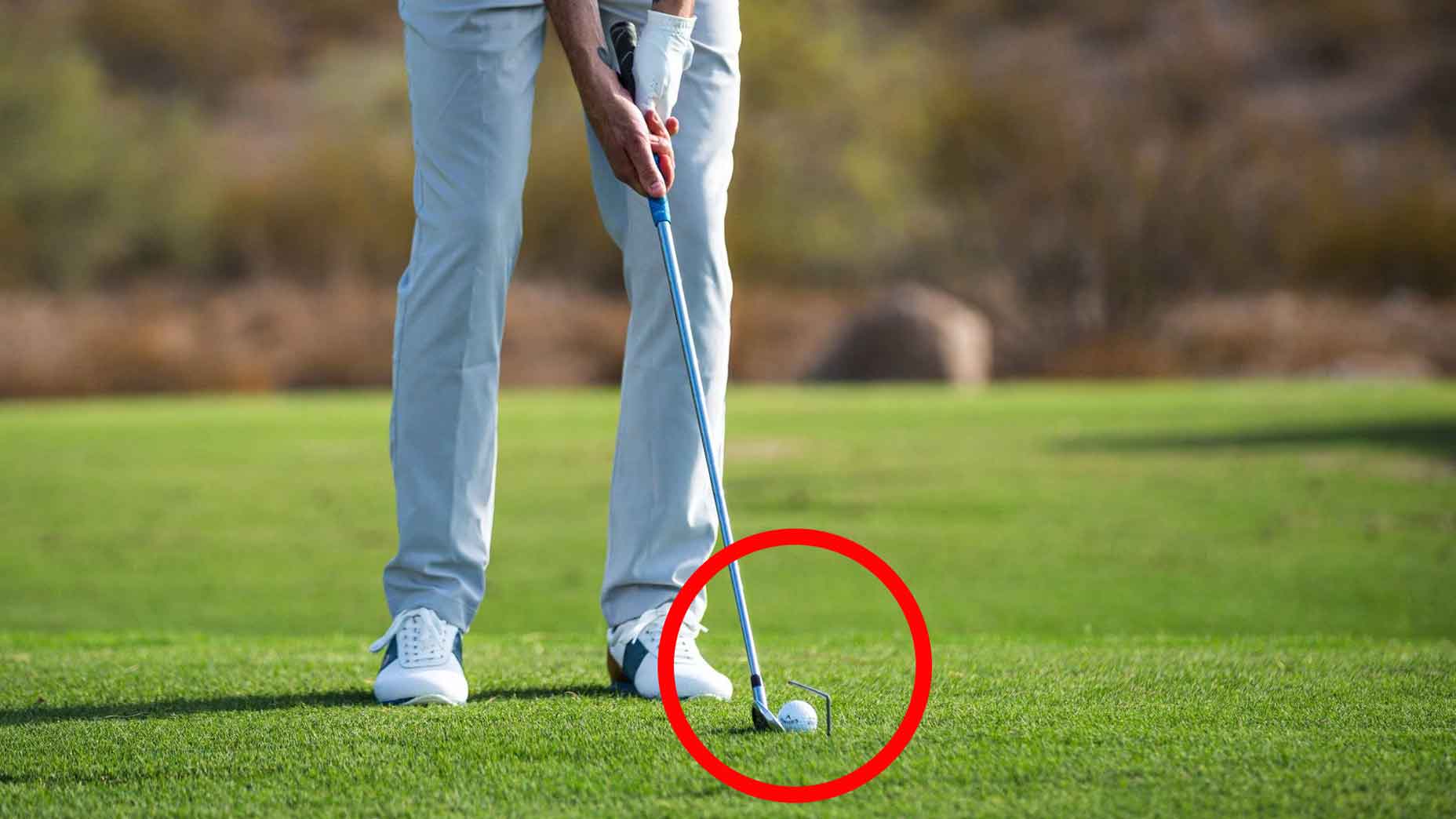Let’s make this simple, shall we? When you find your ball on either a slope or with an uneven lie, remember that the ball flight tends to roll like a bowling ball along the slope on the ground.
For instance, if the ball is above your feet for a right-handed golfer, it will tend to move to the left. If the ball is below your feet, the ball will tend to move to the right. If you have an uphill lie, the ball will go higher and shorter. If you have a downhill lie, the ball will go lower and farther.
Of course, we can have combination slopes as well, but let’s just look at the common uneven lies that players encounter.
If we nail the setup adjustments and stay in good balance on the four slopes, we can make these situations easier to manage. Below, I show you how.
Golf ball above feet

First, take more club for the desired distance — because of the second adjustment we need to make. Next, because the ball is physically closer to you on this type of uneven lie, grip down on the club accordingly, helping to accommodate the spacing.
Another option is to stand farther away from the ball. Problem is, this can make hitting an 8-iron feel like you’re the same distance of a 4-iron, which is a little uncomfortable. So my first recommendation is to grip down.
Finally, aim more right (opposite for a left-handed player), because we are effectively changing the lie angle of the club to be more upright. Since the clubface angle is aiming more to the left due to the slope, not only will the ball tend to start left, but it usually has some curvature in that same direction because your swing path will be to the right of the face.
Golf ball below feet

Since balance is at a premium, and we don’t want to overswing, take an extra club here as well. Next, because the ball is farther from you, widen your stance and “sit” down more to reach it. Also, using the bowling ball analogy from above, right-handed golfers will tend to hit the ball to the right, which leads us to the next adjustment — aim more left (opposite for a left-handed player).
One thing an amateur must remember here: This uneven lie is probably the most “double-crossed” — meaning you’re expecting the ball to go to the right, yet you hit a pull to the left. This happens when you sit down and lower your hands too much at address, which is a common mistake. For this reason, I recommend raising the handle to better level the club on this slope.
The uphill lie
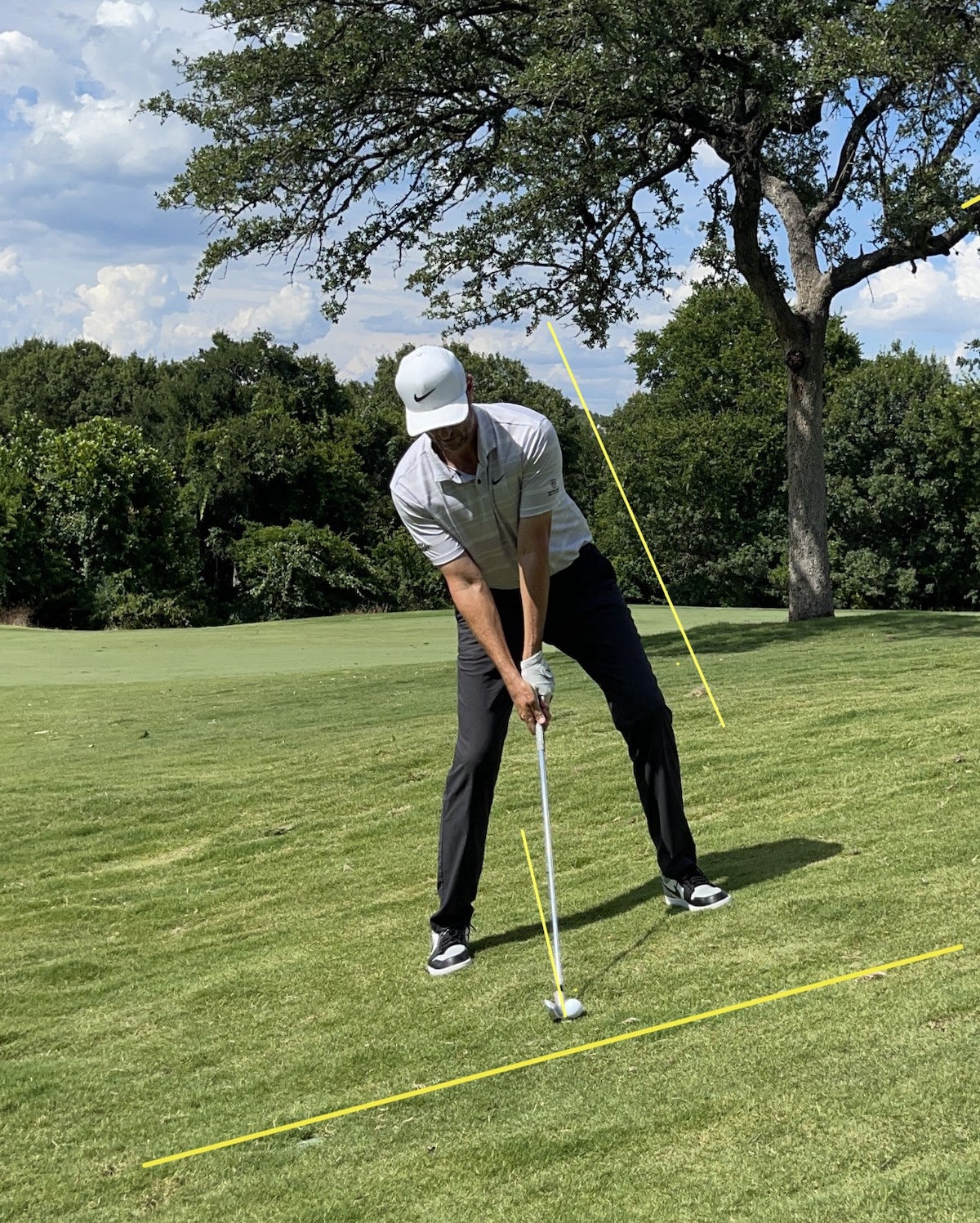
This ball tends to go higher and shorter when dealing with this type of uneven lie. So the first thing we do to help mitigate that is to make sure our body posture is angled and parallel to the slope. This means you position both your shoulder and hip angles to feel as if you’re standing on a level lie.
Next, your weight will be more toward the back foot — so don’t fight it. Instead, play the ball position slightly more back in your stance. On severely uphill slopes, when your weight is really back on your trail leg, play the ball back more and rotate around the trail leg as the anchor.
Finally, take a little extra club. The club will automatically have more loft because of the slope, but more club will help you with the desired distance.
The downhill lie
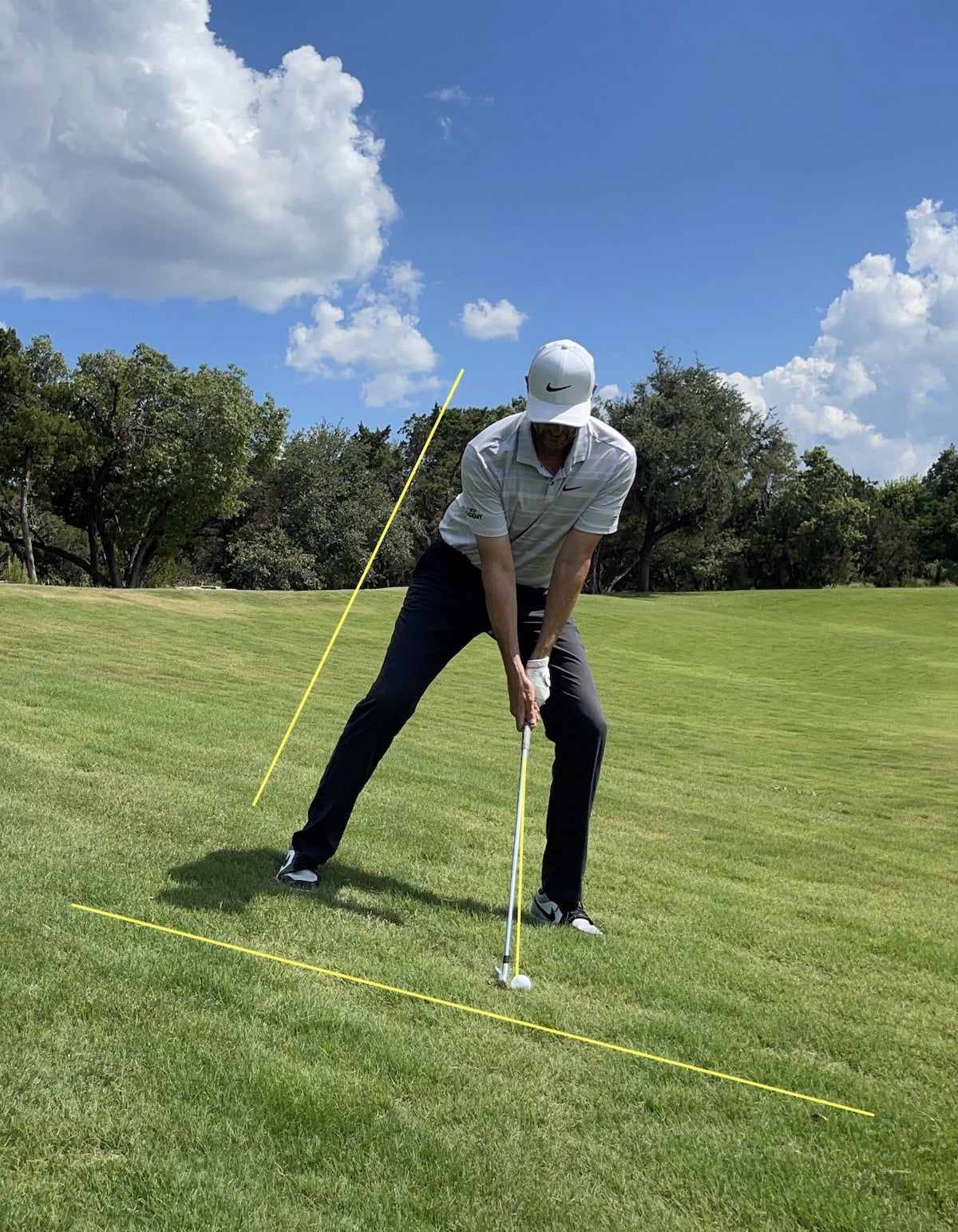
The ball tends to go lower and farther, opposite of the uphill lie. This means you’ll want to angle your shoulder and hip angles downhill to get parallel to the slope. You’ll notice that your weight distribution will be more toward your front foot, so the front leg will act as the anchor.
Next, be sure your ball position is slightly more forward in your stance, because it’s going to come out lower. And remember to take more loft on an approach shot toward the green, since the club will be delofted at setup.
Finally, remember to swing down along the slope through impact. Never try to help the ball up, as this can cause you to fall back and hit the dreaded thinned or chunked shot!
Manage uneven lies with these important three basic adjustments, and you can start setting yourself up for lower scores. Once you get comfortable with the four general slopes above, then understanding the combination slopes — and the other couple variables that you need to add to the setup for each — will be much easier to integrate.
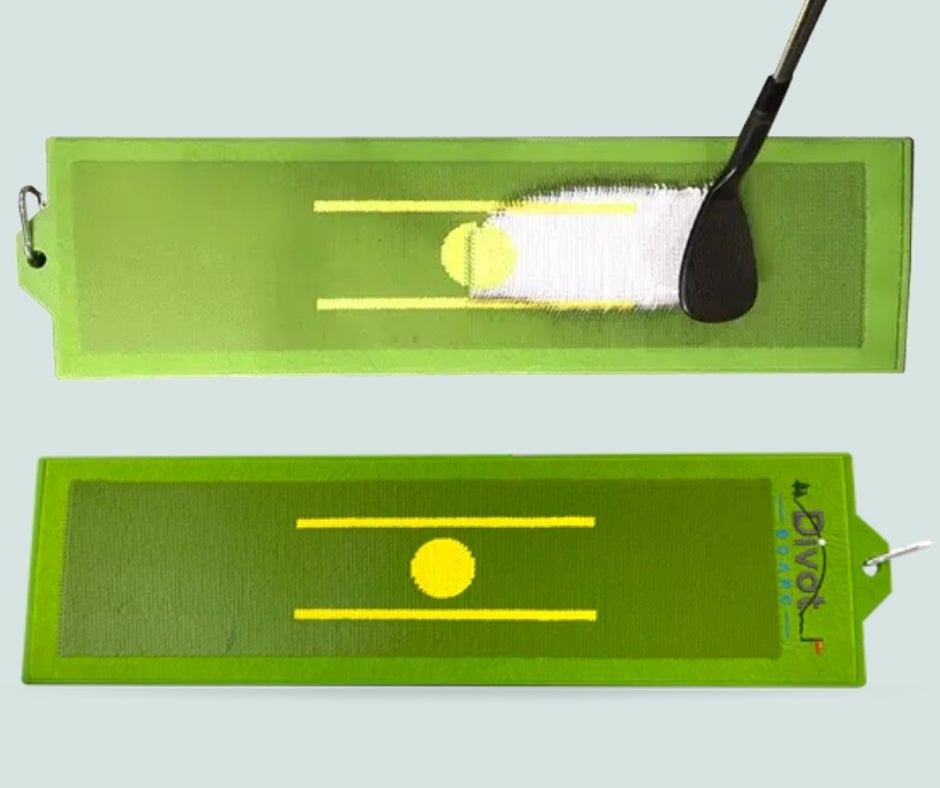
Divot Board
